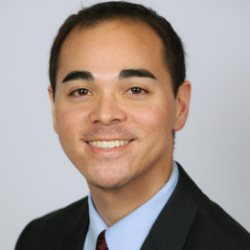As an oncology NP, I understand the need for early and ongoing end-of-life (EOL) discussions, however, it is the very essence of the discussion that is so difficult. Telling a patient they have limited time to live and relaying that information to their family involves an intense level of discomfort on my part, as well as that of the patient and their family members. No one enjoys being the one that tells a patient they’re going to die.
We treat patients at all costs. How could we not? We are educated and trained to save lives. We learn and research how to employ the most effective medications and treatments. We are on a winding road, looking for a cure, and the multiple stops on that road are all intended to culminate in a homecoming that is joyous at the final destination, whether it be death or remission. How well we prepare our patients for either outcome is key.
When we look at EOL discussions through the lens of death in oncology, there just has to be something different we help our patients see. Or maybe we need to help them see that picture with different color lenses in their glasses. Remember the proverbial rose-colored glasses? It is all about the way we look at what we are trying to see. We can choose black and white, or living color, or monochromatic color. We can help our patients choose whatever works best for them. What does that look like? It looks like options that fit best for their lives and the people around them.
We are all equipped with everything we need to make it through these tough discussions, we are just not using everything we possess. Maybe we do not see that we have them, or perhaps we are afraid to use our tools. We need to help our patients see beyond the idea of death for them, and despair for the family. Death can be beautiful and the road to get there can be beautiful, too. We just need to help patients look at death a different way, through a different color lens.
One of my lung cancer patients saw her version of EOL and death on her own terms. Nearly 80, she was petite with short hair and large eyeglasses. She was tough and fought her cancer hard for many years. When she knew the immunotherapy was no longer working and she had run out of treatment options, she put on glasses with different color lenses. For her, those glasses had multi-color lenses that saw many different possibilities. She and I had an EOL discussion in which she asked me to support her choice to stop all treatment and live out her days with gusto. I accompanied her on that journey with the same gusto she embraced. When the oncologist came in the exam room, he tried to convince her we could look for more treatment. But she stayed steadfast in her resolve. Two weeks later, she went on a cruise with her extended family and went zip-lining in Costa Rica. She had a marvelous time and gave her grandchildren memories to cherish. Her daughter tells me she died a very peaceful death with her family by her side.
That little lady reminded me of my mom, who also died of metastatic lung cancer to her brain. My mom said she had enough of treatment after rounds of chemo and whole brain radiation. Importantly, she just wanted her hair to grow back. That was her view of death. She wanted to live out her days in peace. She did, until she became confused from recurring brain tumors. When she died in hospice care, all her children and her grandchildren had been with her on her journey. Yes, death can be calm and peaceful, and it was because she was prepared, and she was ready. It’s the gift I want to give to all my patients and their families.
A few months ago, one of my patients refused to accept the decline of his body from cancer. He was oxygen dependent and down to under 80 pounds. He fought and resisted until the very end, and his family members did not have the chance to experience death as calm and beautiful. He and his wife were angry at me for initiating EOL discussions on several occasions prior to that time. I pleaded with him, but he refused to engage. “No,” he said. “My time has not come yet. I am getting stronger,” he insisted. His body gave in shortly thereafter, with little warning. He just had no energy left to fight. It was not how I hoped his journey would end.
Regardless, I forge on and advocate for my patients. If all my patient wants to see is time with their family, then it is my responsibility to help them see that view more clearly. How do I do that? I ask lots of questions, including all the hard ones.
What does death look like to you?
Where do you want to be when you take your last breath?
How do you think your family will be able to handle you dying at home?
Do you want to be alone or do you want your family there?
I can tell you with certainty that these are all the questions everyone is always thinking, but they are afraid to say them out loud. So I have to be the brave one for my patient, because once I let these questions emerge from my mouth, the patients are relieved they did not have to be the one to ask. Their issues and needs do not go away when we do not ask — the issues just get bigger because they are not attended to.
“What are your goals with your cancer treatment?” I ask my patients. Sometimes it is to live as long as they can, sometimes to see a graduation or a wedding. Sometimes they want to live 10 more years, which is not necessarily possible.
“How do you want to go home in the end?” I inquire. Frequently they want to die at home. Other patients are afraid for their families if they die at home. Mostly, they do not want to suffer in pain and they do not want to die alone.
Patients will tell you what their wishes are. Our job is to listen and provide a safe space to talk without recrimination. It is their journey — they get to see what they want to see. I am only there to help them get a clearer view, using the color lens they prefer — even if they are not the ones I might have chosen.
Having seen patients die, how would you answer the question, 'What does death look like for you?' Share in the comments.
Dr. Karen Scanlon Henry is a nurse practitioner in medical oncology in Miami, Florida. She enjoys baking, long walks, reading, and philosophical discussions with her adult children. Writing has been a lifelong passion and hobby for her. Karen is a 2022–2023 Doximity Op-Med Fellow.
All names and identifying information have been modified to protect patient privacy.
Illustration by Jennifer Bogartz






